In a small business, it can be tempting to not worry about account privileges because the number of resources used by the company is small and teams are compromised of close, trustworthy people. However, implementing the principle of least privilege and making sure that employees have access to just what they need can help prevent a lot of damage in the event of a successful cybersecurity attack. Small and medium businesses must pay close attention to which accounts on their network have the permissions and privileges necessary to access sensitive data and applications, and the ability of those accounts the manipulate, delete, or download that information.
Principle of Least Privilege

The principle of least privilege is a cybersecurity guideline that recommends only allowing employees to have the least number of account privileges necessary to complete their duties and access the data they will need to work. Even if employees are trusted and reliable people, the principle of least privilege protects the network in the event of their account being taken over by a malicious actor. They may accidentally fall for a phishing scam and have their credentials stolen, and if their account can access all of the data on the network, then the malicious actor now has free reign to manipulate and download your critical information.
How Effective is Least Privilege?

The principle of least privilege won’t, by itself, stop an attack all together. Implementing it will generally reduce the damage a malicious actor is capable of doing to your business’ network. Because they won’t be able to download some important data, it will be easier for your IT department or IT consultant to know the extent of a data breach based on the compromised account’s credentials. Additionally, an account without the proper permissions trying to access restricted data can be flagged as suspicious activity that will let your IT team know an account has been compromised early, if other security measures miss the attack.
Monitoring User Privileges

Implementing the principle of least privilege does come with some challenges. For example, as employees take on more responsibilities or change their roles in the company, it can be difficult to ensure they have only the privileges they need for their current job. This requires account permissions and privileges to be monitored regularly and updated in real time as employees leave the company or change their roles. While this process requires diligence and strong communication, it can pay dividends in the long run if a malicious actor is able to access your company’s network through a compromised user account.
Summary
Ensuring accounts have the correct permissions is essential to keeping any business’ data secure, but small and medium businesses can have a lot more damage done to them if a hacker gains control of an account with a large number of privileges. Whether it’s to help configure account permissions across the services your business uses or to help monitor those privileges as your business grows, our cybersecurity experts here at Robinett Consulting believe small and medium business should have the help of a trustworthy partner in IT. If you think your business needs to adjust its user permissions across the network, then our team is ready to provide a complimentary consultation to see how we can help you today!




